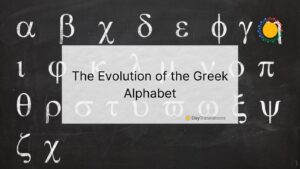In today’s world, businesses and brands are realizing the importance of making everyone feel seen and heard through inclusive marketing campaigns. One of the most powerful tools in achieving this is language. Language doesn’t just help us communicate; it has the ability to shape how people feel, how they connect with each other, and how they see themselves in the world. For marketers, using the right language is crucial to creating campaigns that are inclusive and welcoming to all.
But what does “inclusive marketing” mean, and how can language play a role? Let’s dive into the exciting world of language and marketing to see how words can create a positive, inclusive space for everyone.
What is Inclusive Marketing?
Before we explore the power of language in marketing, it’s important to understand what inclusive marketing is. Simply put, inclusive marketing refers to the practice of designing and promoting campaigns that represent people of different backgrounds, identities, abilities, and experiences. It’s about making sure that everyone feels represented, whether in ads, social media posts, or product descriptions.
When done right, inclusive marketing shows that a brand cares about diversity and values the uniqueness of all customers, regardless of their race, gender, age, disability, or sexual orientation. Language plays a huge part in this because words can either make someone feel like they belong, or like they’ve been excluded.
Why Does Language Matter in Marketing?
Language is one of the most powerful tools marketers have. It’s not just about choosing the right words to sell a product—it’s about the emotions and messages those words send. Words can either be inclusive or exclusive, respectful or offensive, and welcoming or dismissive. Choosing the right language means that marketers are speaking to everyone, not just a specific group.
Here are a few ways language impacts marketing campaigns:
1. Language Shapes Perception
The words you use in a campaign can influence how a product or service is perceived. If the language feels outdated or biased, it could unintentionally turn away potential customers. For example, if an ad only shows young, slim, able-bodied people, it can make older, differently-abled, or larger individuals feel like they don’t belong. But if the language is welcoming and diverse, it can show that the brand cares about all kinds of people.
2. Language Builds Connection
In inclusive marketing, the goal is often to build a connection between the brand and its audience. When people see themselves reflected in the language, they are more likely to trust the brand and feel like it’s speaking directly to them. Inclusive language helps create this sense of belonging. For example, addressing all genders with terms like “everyone” or using gender-neutral pronouns like “they” shows respect for people of all gender identities.
3. Language Promotes Respect and Equality
The words you choose can communicate respect for all individuals. Using inclusive language means acknowledging people’s differences without making anyone feel less important. For instance, instead of using terms that stereotype or generalize, inclusive marketing uses language that is open-minded and respectful. This kind of language can build loyalty and trust with customers, which is key for long-term success.
Tips for Using Language to Create Inclusive Marketing Campaigns
Now that we know why language is so important, let’s take a look at some practical tips on how to use language to create inclusive marketing campaigns.
1. Avoid Stereotypes
Stereotypes are often based on assumptions and oversimplifications about a group of people. For example, if a brand only uses women in pink clothing to sell beauty products, it’s reinforcing a stereotype that all women like pink and beauty products. Instead, aim to show a variety of individuals in your marketing materials. Diversity in race, gender, age, and body type will make everyone feel represented.
2. Use Gender-Neutral Language
Using inclusive language means being mindful of gender. In the past, ads and campaigns often used “he” or “she” to refer to everyone. Today, more brands are adopting gender-neutral terms like “they” to be inclusive of people who don’t identify as male or female. You can also use words like “everyone” or “people” instead of assuming someone’s gender.
3. Be Mindful of Ableism
Language can sometimes unintentionally exclude people with disabilities. For instance, using phrases like “crazy” or “lame” to describe something negative can offend people with mental health conditions or physical disabilities. Instead, choose words that focus on empowerment and ability. You can also include accessibility features in your marketing materials to show that your product or service is for everyone.
4. Be Culturally Sensitive
Different cultures and communities use language in unique ways. What works in one country might not be appropriate in another. Be mindful of cultural differences and avoid using slang or references that might not resonate with all audiences. Take the time to research the preferences of different cultural groups to ensure that your language is inclusive and respectful.
5. Highlight Diversity
Instead of just focusing on one group of people, try to show the wide variety of people who use your product or service. This can be done through the language in your campaigns, as well as the visuals you use. Whether it’s showcasing different racial backgrounds, gender identities, or body types, make sure your language represents all kinds of people and makes them feel included.
The Benefits of Inclusive Marketing
Inclusive marketing isn’t just the right thing to do; it also brings real benefits to brands. When companies use language that resonates with all types of people, they build stronger customer loyalty and reach a wider audience. More and more consumers are looking for brands that align with their values, and inclusive marketing helps create a positive image that resonates.
In addition, inclusive marketing can help businesses stand out in a crowded market. Brands that embrace diversity in their messaging can attract customers who are looking for authenticity and respect. This can result in increased sales and greater brand recognition.
Final Thoughts
Language is more than just words—it’s a tool that can shape how people feel, connect with others, and see themselves in the world. In marketing, the right language has the power to build inclusivity, break down barriers, and foster positive relationships between brands and their customers. By being mindful of the words we use, avoiding stereotypes, and showing respect for all people, brands can create campaigns that make everyone feel valued and seen. And in today’s world, that’s a winning strategy for success!












Sorry, the comment form is closed at this time.